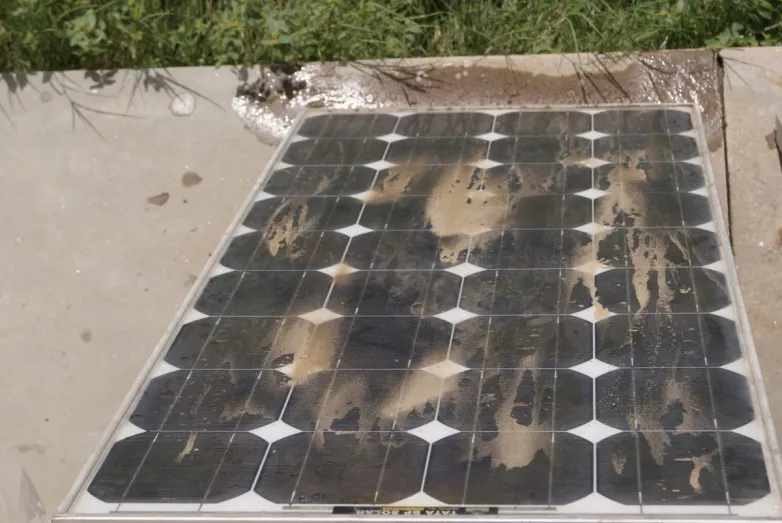Promising soiling mitigation solutions should not be left to gather dust
Oct 25, 2019 07:46 PM ET
- A study has estimated the cost of PV project soiling may increase from €3-5 billion last year to €4-7 billion by 2023 due to more extensive deployment in high insolation and soiling-affected regions, such as China and India. The authors of the paper outlined the potential of soiling mitigation technologies while stressing more R&D is needed to reduce costs and for the adoption of such measures on a larger scale.

Although several mitigation approaches are available, the PV industry’s soiling problem is far from being solved, particularly in in high-insolation arid and semi-arid climates, according to the paper Techno-Economic Assessment of Soiling Losses and Mitigation Strategies for Solar Power Generation, published in Joule.
The authors of the study claim soiling-related energy yield losses may be higher in regions such as the Middle East and Asia, and can offset within weeks the impressive progress made in solar cell and concentrating solar power (CSP) efficiency in recent decades.
“Even in optimized cleaning scenarios, soiling reduces the current global solar power production by at least 3-4%, with at least €3-5 billion annual revenue losses, which could rise to 4-7%, and more than €4-7 billion losses, in 2023,” stated the study. That situation will be exacerbated by the rising volume of solar capacity in highly soiling-affected regions such as India and China, but also in markets with cheap electricity prices, where the incentive for cleaning panels is reduced.
Soiling, which is considered a contributory factor in potential induced degradation and the development of hot spots, can easily result in yield losses of more than 1% per day, the authors of the paper added.
The lack of a universal solution to soiling was highlighted as a concern in the industry. Cleaning solutions, which depend heavily on labor or water consumption, raise project costs. An urgent need has been identified for water-less and inexpensive soiling mitigation technologies such as optimized cleaning plans, automated solutions, anti-soiling coatings and tracking system modifications.
A wide range of technologies
The soiling report’s authors indicated PV module design, improved monitoring and site adaptation are efficient measures to mitigate the problem. Other technologies, such as electrodynamic screens or dew mitigation, are too costly at present and require further R&D to bring down their price. Reducing soiling by half by deploying such solutions, however, may result in net additional costs of just €2/m2, according to the researchers
Soiling matter varies by location but includes bird droppings, bacteria biofilms, algae, lichen, mosses, fungi, plant debris, pollen, engine exhaust fumes and industrial and agricultural emissions – such as feed dusts, as well as dust and sand.
Rain is described as an important mitigating factor as it can serve as a cleaning tool in regions with high rainfall although it also has the negative effect of depositing wet aerosol particles washed out of the atmosphere. Wind also influences particle deposition. “Tilt angle of the PV modules and CSP mirrors should be considered, since soiling rates are greater on flatter surfaces,” the research stated.
Coating materials
The study proposes several coating materials that could be used to mitigate soiling even though they only extend the intervals between cleaning, rather than removing the need for it entirely. Coatings also offer varying durability and effectiveness depending on climate. “Nevertheless, the attraction of a passive anti-soiling solution is great, so that development continues, with many promising approaches,” the authors stated.
Solutions such as electrodynamic dust shields (EDS) and night-time heating are described as too expensive and insufficiently tested under field conditions, although their development should be continued, according to the study.
“Together with the technological approaches, soiling mitigation can start at the site selection and plant design stage,” the researchers said. “Studies on this aspect are particularly lacking, suggesting that more research is needed on soiling monitoring – including resource assessment campaigns – soiling modeling and integration into meteorological models.”
Also read

